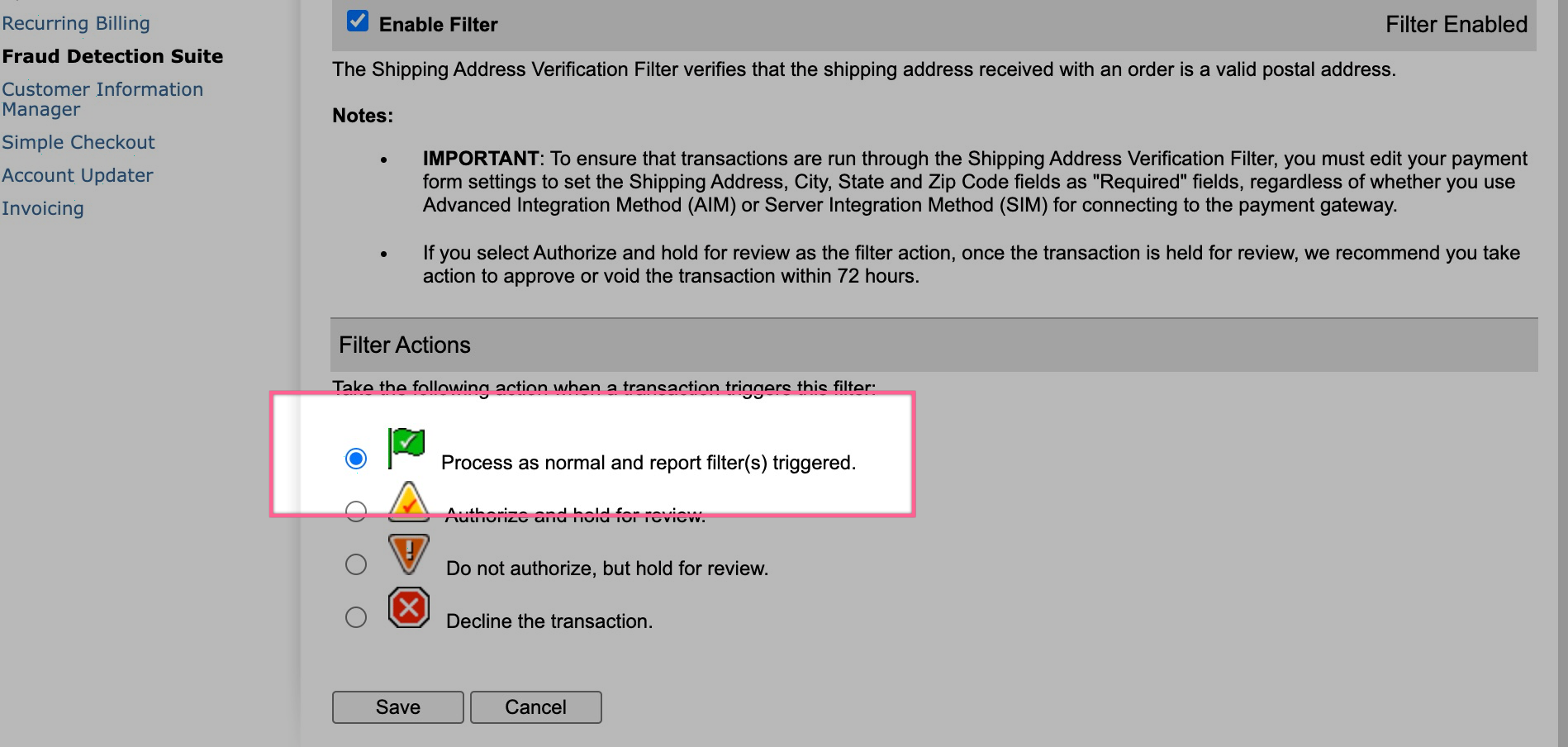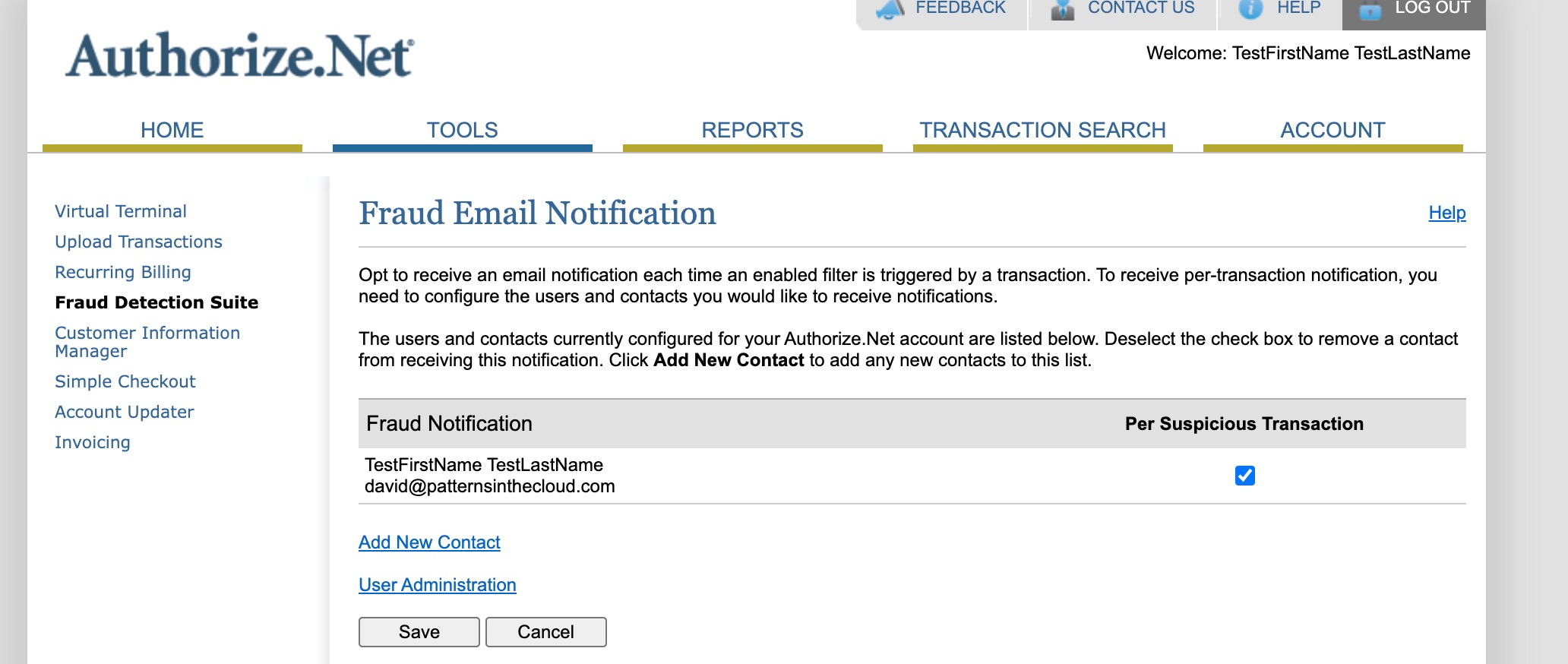Can I Use My Advanced Fraud Detection Suite Transaction Filters?
Can I Use My Advanced Fraud Detection Suite Transaction Filters?
Yes!
However, Authorize.Net does not distinguish between different order types (checkout orders which authenticate payments using the checkout form address and payment fields vs orders created from Scheduled Orders processing using previously saved payment methods). This means merchants must work around this (Authorize.Net) limitation by configuring the action taken ("Process as normal and report the filter(s) triggered) when these filters are triggered.

For more details about these filters and their configuration in Authorize.Net, see Authorize.Net's documentation on Suspicious Transaction Filters
Where does Authorize.Net Notify me of Transactions flagged by my transaction filter(s)?
The email you entered in Authorize.Net's Fraud Detection Suite Email Notifications page is where you configure the address where notifications for transactions flagged by the filters are sent.

What is an authenticated payment method?
Authentication is how gateways check a payment method's additional details when the method is entered into a payment form for a transaction or being saved for later use. These additional requirements to be verified / met are measures against fraudulent transactions.
Common Authentication Checks
- Address (billing / shipping)
- CVV
When Does Authentication Occur?
Authentication occurs on any "card present" transaction, or more plainly: any transaction initiated by the customer
- an online (or in-store) purchase
- saving their payment method
Compare this to a "card not present" transaction: a non-customer-initiated transaction (ie. Scheduled Order processing). QPilot uses the secure payment tokens returned by Authorize.Net when the payment method was originally authenticated when it was saved.
QPilot uses these secure payment tokens. This allows these securely saved payment methods to be used for future orders without the need for customers to re-authenticate their payment method every time.
Updated over 3 years ago
